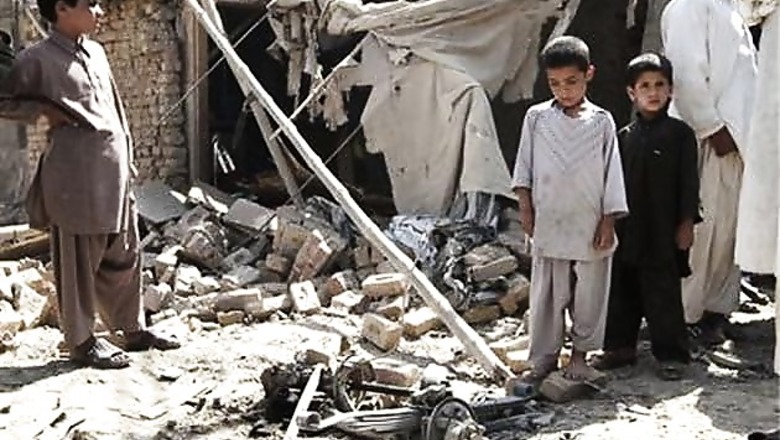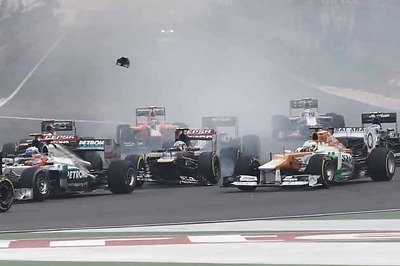
views
Kabul: An insurgent bomb killed six American soldiers in eastern Afghanistan, part of a surge of violence that has dealt a stark reminder that war is still raging as NATO plots an exit strategy for the end of 2014.
Violence raged across the country on Monday, including grisly attacks by multiple suicide bombers, a day after donor nations meeting in Tokyo to pledge $16 billion in aid.
President Hamid Karzai and his top ministers said the pledges exceeded their expectations and sent a strong signal that the international community will not abandon Afghanistan even though foreign troops have started to leave.
It also sent a message to Karzai's adversaries in the Taliban and elsewhere, who are hoping his support will weaken once the foreign combat troops leave or move into support roles in 2 1/2 years.
Sunday was a particularly deadly day in Afghanistan. Roadside bombs and militant attacks killed seven American soldiers, 19 Afghan civilians and seven Afghan policemen.
Violence erupted again on Monday as militants launched suicide attacks on two police headquarters and carried out other assaults that left 20 people dead - three policemen, an Afghan prosecutor, two children and 14 attackers, according to officials. At least 60 other people were wounded.
German Brig Gen Gunter Katz, a spokesman for the US-led coalition, said the six Americans were killed on Sunday when their armoured vehicle struck a bomb in eastern Afghanistan. He said a seventh American soldier was killed in a separate insurgent attack Sunday in the south.
Taliban spokesman Zabiullah Mujahid claimed responsibility for that attack in Wardak province, just south of Kabul. Coalition and Afghan forces are trying to secure areas of Wardak that insurgents use as gateway into the Afghan capital, where they have staged high-profile attacks on Afghan government and NATO targets.
Monday's violence began when gunmen assassinated a chief prosecutor in eastern Ghazni province as he drove to work. Mohammad Ali Ahmadi, the deputy provincial governor, said Sahar Gul was shot twice.
Later in the day, three suicide bombers riding in a three-wheeled vehicle blew themselves up in Kandahar city, said Kandahar provincial spokesman Ahmad Jawed Faisal.
Then nearly a dozen other suicide attackers tried to storm the police headquarters in Kandahar, but they failed to enter the compound, Faisal said. The incident was still being investigated, but Faisal said authorities suspect that the three attackers in the vehicle, a form of miniature pickup known as a Zaranj, were headed toward police headquarters when their explosives detonated prematurely.
Three policemen and two children were killed in the attack. Another 18 police and 12 civilians were wounded.
"I'm not happy to sit here and announce such bad news, but we are facing an enemy that doesn't have a heart, so we have to be strong," Kandahar provincial Gov. Tooryalai Wesa told reporters at a news conference. "They don't care about the innocent people. They just want to scare the people."
A total of 14 suicide attackers, who fired at police for about two hours from several directions, blew themselves up or were shot and killed by police, Kandahar officials said.
Militants also attacked a police headquarters building in Shibirghan, the capital of Jawzjan province in the relatively peaceful north.
Provincial governor Mohammad Aleem Saaie said a suicide bomber on a bicycle blew himself up near the headquarters. No one died, but he said 26 people were wounded, including two policemen, a doctor and a prosecutor.
"This was another attack against innocent civilians," said General Abdul Aziz Ghairat, the provincial police chief. "The majority of the wounded people are civilians."
Attackers have picked up the pace during the summer months, planting improvised explosive devices, or IEDs, along roads or footpaths. But during the past year, US troops found and avoided more homemade bombs than a year ago because of improvements in training, equipment and intelligence, the US military said.
In the first three months of this year, 5 per cent of the bombs planted across Afghanistan hit their mark, according to the Pentagon's Joint IED Defeat Organization. That's down from 10 to 12 per cent over the same three-month period a year ago.
So far this year, 231 US and other NATO forces have been killed in Afghanistan. That compares with 271 in the first six months of last year.



















Comments
0 comment